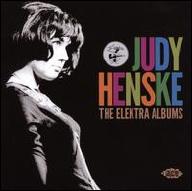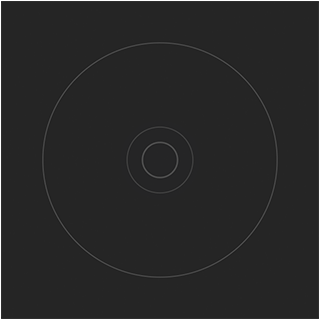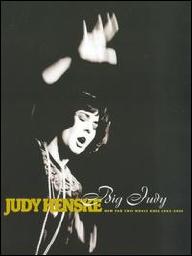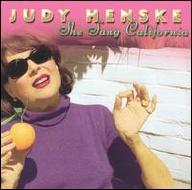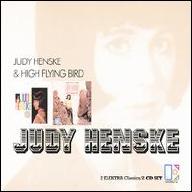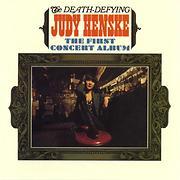Judy Henske was born in Chippewa Falls, Wisconsin, on December 20, 1936. After studying at the University of Wisconsin in Madison, she spent time in Ohio and Pennsylvania, then moved to San Diego, California. Henske began performing at coffeehouses and clubs in California, once sharing a bill with Lenny Bruce. In 1959, she appeared on an obscure album called Coffee House, in which she and several other artists sang folk and international selections for a crowd of beatniks and hangers-on. In 1961, Henske joined the folk group the Whiskeyhill Singers, formed by Dave Guard shortly after he left the Kingston Trio. The group proved to be short-lived, splitting up after cutting one album for Capitol Records and some songs for the movie How the West Was Won. Henske headed back to Los Angeles, where she landed some high-profile television appearances on the shows Hootenanny and The Judy Garland Show, and made an appearance in what was the first and last folk music exploitation movie, 1963's Hootenanny Hoot, which also featured Johnny Cash, the Brothers Four, and the Gateway Trio.
Henske next moved to New York City, where she became a fixture on the Greenwich Village folk scene. She was spotted by Elektra Records, then one of America's most prestigious folk labels, and in 1963 they released her self-titled debut album. Recorded live, Judy Henske wasn't a folk session but a nightclub performance that featured bawdy blues numbers and comic between-song patter along with some traditional folk ballads, gospel numbers, and novelty tunes. Henske's second album, 1964's High Flying Bird, was a more straightforward folk collection, though unlike most folk records of the era, her studio band included a drummer, Earl Palmer. In addition to playing nightclubs and coffeehouses, Henske also dabbled in acting, earning enthusiastic reviews for her work in an off-Broadway production of Anita Loos' Gogo Loves You.
In 1965, Henske signed with Mercury Records, which attempted to remodel her into a more middle-of-the-road artist on Little Bit of Sunshine...Little Bit of Rain. Henske was outspokenly unhappy with the album, and later that same year she recorded another live set, produced by her friend and admirer Jack Nitzsche and released by Reprise. The Death Defying Judy Henske: The First Concert Album found her adding soul and R&B influences to her already broad stylistic range, and while it was a strong work, it made little impression on the charts. Henske cut three singles for Reprise with Nitzsche at the controls, including a striking version of Fred Neil's "The Dolphins" (retitled "Dolphins in the Sea"), before she and the label parted ways.
Henske had married musician and producer Jerry Yester in 1963, and after The Death Defying Judy Henske ran its course, the couple opted to leave New York City and settled in California's Laurel Canyon. They moved east for a spell when Yester briefly joined the Lovin' Spoonful, but by 1968, Henske and Yester had returned to California and welcomed their first child when they began work on a duo album. 1969's Farewell Aldebaran, an ambitious exercise in psychedelic folk-rock released by Frank Zappa's Straight Records label, was well reviewed but commercially unsuccessful, though it went on to become a cult favorite and was reissued by Omnivore Recordings in 2016. Henske and Yester next formed a band called Rosebud with Craig Doerge, David Vaught, and John Seiter. A cleverly executed exercise in West Coast pop with washes of Baroque pop, folk, and country-rock, Rosebud's self-titled debut album, released by Warner Bros. in 1971, was doomed commercially when Henske and Yester's marriage fell apart and she began a relationship with bandmate Doerge. With no band to promote the release, Rosebud sank without a trace, and after wedding Doerge in 1973, Henske retired from performing.
She continued to write songs on occasion, and in 2000 she released her first album since Rosebud, Loose in the World, produced by Craig Doerge and featuring guest vocals from Graham Nash. Henske returned to live performing to support the release, making occasional appearances (mostly on the West Coast), and in 2005 she released She Sang California, on which she was accompanied by an impressive cast of Los Angeles studio legends including Leland Sklar, Russ Kunkel, Greg Leisz, and Fred Tackett. Judy Henske died on April 27, 2022, in Los Angeles after a long illness; she was 85 years old. ~ Mark Deming, Rovi


